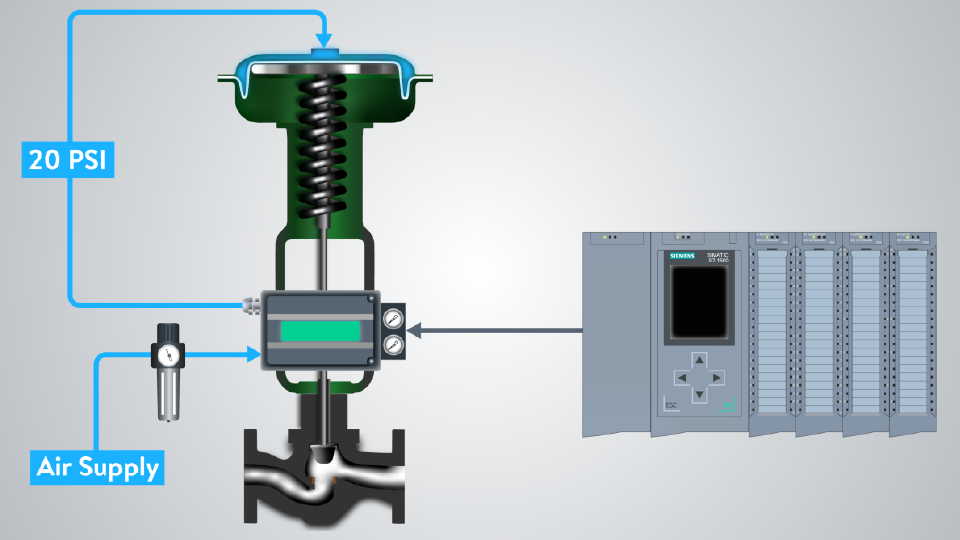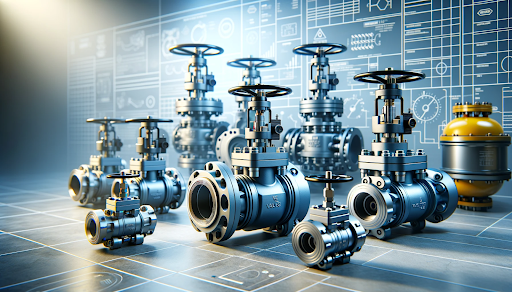Exploring the Capability of Modern Control Valves in Industrial Applications
Exploring the Capability of Modern Control Valves in Industrial Applications
Blog Article

Maximize Energy Cost Savings and Convenience With Advanced Building Automation Controls
In the world of contemporary architecture and facility administration, the combination of innovative building automation regulates stands as a pivotal innovation. By taking advantage of the power of automation, structures can adjust, respond, and advance in means that were as soon as unbelievable.
Power Effectiveness Conveniences
Power performance advantages can substantially reduce power intake and operational costs in structures. By implementing energy-efficient practices and innovations, structure owners and operators can accomplish significant financial savings while likewise adding to ecological sustainability. One of the key benefits of improving energy effectiveness in structures is the decrease of utility costs. Energy-efficient systems, such as sophisticated structure automation controls, can maximize using resources like illumination, heating, and cooling, leading to reduced power costs in time.
In addition, improved energy performance can prolong the lifespan of building tools and systems. By operating more effectively, heating and cooling systems, lighting components, and various other structure components experience much less wear and tear, causing lowered maintenance and substitute expenses. In addition, energy-efficient structures usually command greater property worths and rental prices, giving lasting financial advantages to owners.
In addition, energy effectiveness can boost passenger convenience and productivity. Properly controlled interior settings with ideal lighting and thermal conditions develop a more conducive and enjoyable work space, leading to enhanced employee fulfillment and efficiency. In general, the energy efficiency advantages connected with sophisticated structure automation controls are diverse, including price savings, environmental stewardship, and passenger health.
Boosted Convenience Control
Enhancing comfort control in building environments needs a sophisticated integration of sophisticated automation systems for optimum passenger wellness. By utilizing innovative structure automation controls, facilities can customize the indoor setting to fulfill the details needs and choices of residents. control valves.
Boosted comfort control goes past standard temperature modifications. It consists of attributes such as tailored settings, occupancy sensors, and natural light application to develop a receptive and dynamic environment. By integrating these sophisticated controls, structures can not just boost comfort yet additionally boost energy effectiveness by maximizing system procedures based upon real tenancy and use patterns. Inevitably, focusing on occupant comfort through innovative automation systems leads to an extra pleasurable and healthier indoor environment.
Functional Efficiency Improvements

Additionally, the implementation of real-time monitoring and analytics devices makes it possible for building drivers to determine power inadequacies and operational anomalies without delay. By continually keeping track of power use patterns and system efficiency metrics, adjustments can be made in real-time to maximize power usage and guarantee peak operational performance. control valves. Additionally, including demand feedback techniques right into building automation controls can better enhance functional performance by dynamically changing power usage based upon grid conditions and pricing signals
Indoor Environment Optimization
Reliable interior environment optimization is an essential element of building automation controls, making certain owners' convenience and well-being while taking full advantage of power cost savings. By utilizing sophisticated sensors and controls, developing automation systems can constantly adjust and keep an eye on temperature, humidity levels, air quality, and ventilation to develop an ideal interior setting. Preserving comfortable and consistent problems not only boosts passenger complete satisfaction but additionally increases performance and overall wellness.
Indoor climate optimization also plays a crucial role in power performance. By fine-tuning ventilation, heating, and cooling systems based upon real-time information and occupancy patterns, building automation controls can significantly lower power intake - control valves. For example, carrying out strategies such as demand-controlled ventilation and thermal zoning can aid decrease power waste while ensuring anonymous that each area of the structure receives the needed conditioning.

Sustainable Setting Production
Structure automation controls not only optimize indoor environment conditions for power performance and occupant convenience yet also this article lay the structure for creating a lasting atmosphere through critical monitoring of resources and systems. By integrating advanced structure automation technologies, such as sensing units, actuators, and smart software, facilities can change and keep an eye on power usage in real-time to reduce waste and reduce their carbon impact. These systems allow predictive maintenance, identifying prospective problems prior to they intensify and enhancing tools efficiency to boost durability and efficiency.
In addition, sustainable atmosphere development extends beyond power management to include water conservation, waste reduction, and indoor air top quality renovation. Building automation controls can control water usage, spot leakages, and make certain appropriate waste disposal techniques, adding to general sustainability initiatives. In addition, by keeping track of and controlling ventilation and filtration systems, these technologies enhance occupant health and wellness and efficiency while decreasing power usage connected with a/c procedures.
Conclusion
To conclude, advanced structure automation manages deal considerable benefits in terms of energy financial savings, convenience control, operational effectiveness, indoor climate optimization, and developing a lasting setting. By implementing these controls, buildings can accomplish ideal performance while lowering energy intake and improving resident comfort. It is evident that using advanced automation technology is essential in boosting structure performance and read the full info here developing an extra lasting future.
Power effectiveness advantages can significantly reduce power consumption and functional prices in structures. In general, the power performance advantages connected with sophisticated building automation controls are diverse, incorporating expense financial savings, environmental stewardship, and passenger well-being.
In addition, integrating need feedback techniques right into building automation controls can better boost operational efficiency by dynamically readjusting power use based on grid conditions and prices signals.
Building automation manages not only optimize interior climate problems for energy performance and passenger comfort but likewise lay the foundation for creating a sustainable atmosphere via strategic management of systems and resources.In conclusion, progressed structure automation manages deal significant advantages in terms of energy savings, convenience control, operational performance, interior climate optimization, and creating a sustainable setting.
Report this page